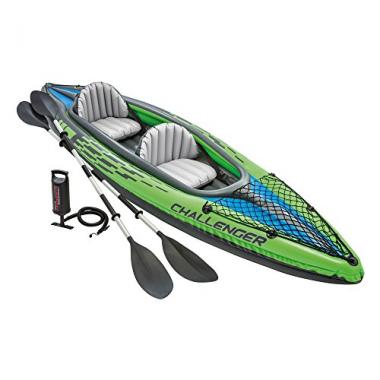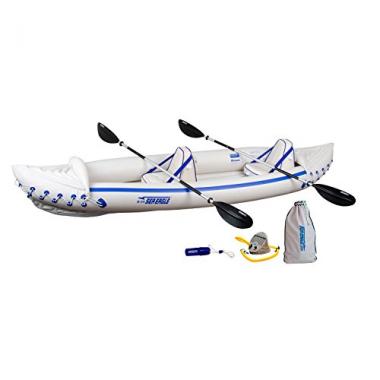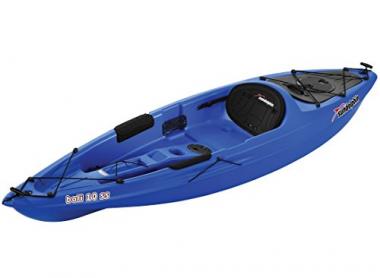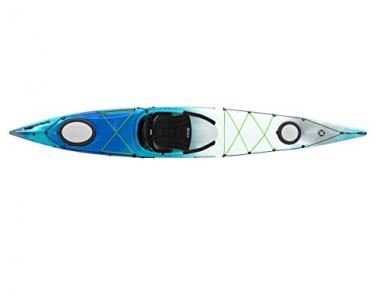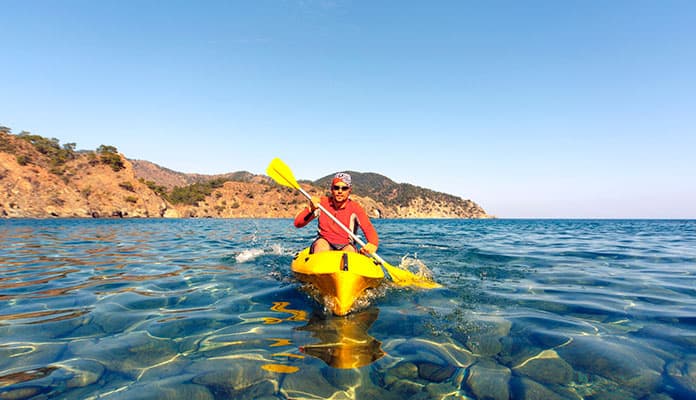
You have found the best kayak for you and you can’t wait to try it out. While we know you are excited you must learn how to properly kayak before heading out on more advanced trips. Kayaking is a very popular water sport for good reason. In general, it is very easy to learn and can provide you with some unforgettable experiences. As you can take your kayaking experience in many different directions, it is important to first gain some confidence in the water. Knowing the basics of how to kayak steps will work well to ensure that your day on the water remains fun and safe.
Knowing how to properly paddle your kayak, how to launch your kayak and get back to shore, and what to do in the event of capsizing is crucial for every kayaker to know. Having a strong understanding of the basics will allow you to get the most out of this rewarding sport. After a few times out on the water, you will be ready to take to the ocean, try your hand at fishing on a calm lake, or even going out on overnight camping trips.
Kayaking For Beginners
Whether you are deciding to buy or rent your kayak it is important to understand the different styles available. As this sport is so popular there are many different kayak styles in today’s market. If you are a beginner, there are four main types to focus on. These include the following types:
Recreational Kayaks
This is the best style of a kayak to learn off of as they have a wide and short design. Recreational kayaks are perfect for your general everyday uses as they are easy to maneuver through the water and are generally quite stable.
Inflatable Kayaks
Inflatable kayaks are a popular choice as they are quite a cost-effective option and are ideal for those looking for a boat that is easy to transport. While they may be harder to maneuver they offer superior durability.
Sit On Top Kayaks
This kayak looks quite a bit different than your standard kayak as you do not sit inside the boat and instead sit on top kayak, hence their name. These work as excellent beginner kayaks for those in warmer climates. In this boat style, you tend to have a much higher chance of getting splashed which makes it less ideal for those who are paddling through cool waters. They are generally wider and slower which makes them far more stable and easier to maneuver. This kayak is an ideal option for those traveling to calmer waters.
Touring Kayaks
This type of kayak is narrow and long in design and are mostly used for ocean waters or for paddling long distances. The long design of touring kayaks makes them ideal for straight paddling but they are much harder to maneuver. As they are designed for longer trips these kayaks offer a superior amount of storage.
Kayak Costs And Going Cheap
As with any purchase, it is incredibly important to decide on a budget you are comfortable staying in before you start your search. This will work wonders in ensuring that you are happy with your purchase as you are sticking within your means. It is also important as it will help to narrow down your search so you can find your ideal kayak with ease.
Generally speaking, you will be able to find a quality beginner kayak in the $200 – $400 price range. This price can go up to a couple of thousand dollars for those who have more skill and require a stronger boat. Those who are going to spend more time expanding their skills to a more intermediate level should plan to spend a bit more to get features that are only found in higher quality boats.
Important Beginner Kayak Features
You may be wondering what the most important key features of a beginner kayak are. This will look a bit different from every paddler but generally speaking, you will want to keep an eye on a few key features. The first step will be to decide if you are looking for a solo or tandem boat. As safety should be of the utmost importance as you will want a boat that is wider so that it will ride stable. Weight and length should be an important feature to pay attention to as you will want a kayak that you can transport with ease.
Once these basic needs are met you can get picky to customize your boat to fit your needs. If you are planning longer trips you may want to look for extra storage compartments. If you are looking to fish, having a boat with fishing accessories such as rod holders should be on your list.
Kayak Clothing
Most people mistakenly dress for external weather conditions when considering what to wear when kayaking. A much safer thing to do is to instead consider the water temperatures you are paddling through. You are likely to end up at least a little bit wet when kayaking so ensuring you are properly prepared is a good idea. There are three primary layers to wear when in colder waters. A moisture layer, an insulation layer, and a water and wind-protective layer. Depending on how cold the water is you will want to pay special attention to thick wool socks and possibly even gloves.
Of course, when paddling through warmer waters you have much more freedom to decide what you want to wear. You will still want to wear a moisture wicking fabric regardless of temperature as it will ensure you stay dry in the water. No matter the temperature of the water you will always want to wear proper sun protection including sunscreen and a hat.
Kayaking Location
When you are in the learning stages of your kayaking experience you will want to pay special attention to where you are choosing to kayak. It is best to choose a small pond or a calm lake as it will help you to build confidence in your boat. Getting stuck in currents or waves as seen with river or ocean kayaking can be a tough experience. It is best to save these tougher climates for a time where you have developed your skills.
Launching a Kayak
This may seem like an easy thing to do but it can be tricky. Most launches will take place on one of two types of shores: a steep or gentle grade.
The steeple graded shore will be more difficult than the gentle one. It will require you to position the kayak so that it is parallel to the shore. Once it’s in the correct position use the paddle to stabilize the boat. Do this by placing it over the boat so that the paddles rest on the water. You can then climb into the boat and get comfy.
If you are launching on a gentle slope you will be able to walk the boat to a comfortable depth and then simply climb into the rig. You will then be able to get comfortable while you float gently away from the shore.
Pro Tip: Put your floatation device on before getting into the kayak. If you put it on after you will struggle to get situated and risk tipping.
Paddling a Kayak
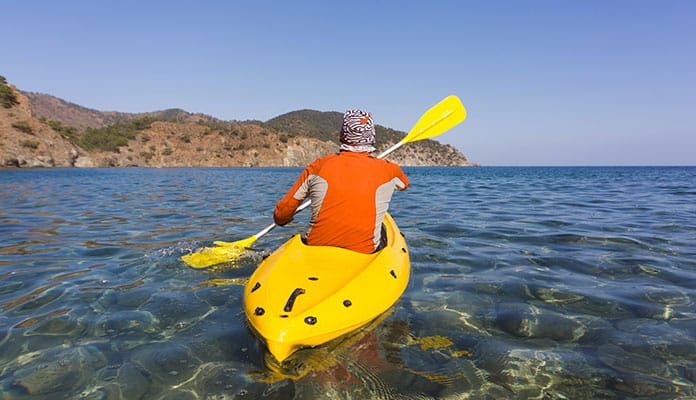
When you first start kayaking you will want to get the hang of paddling in calm waters. The technique used for kayaking is much different from that of canoeing. Ideally, it is nice to learn from a variety of different paddles until you find the style that works the best for you.
It can take a while to get your paddle technique down pat. Oftentimes, this starts with finding the right paddle for you. If you don’t have the right paddle, you will find this can cause improper technique and result in crippling shoulder and back pain. You will want a paddle that has a square blade as this will make learning to paddle much easier.
Generally speaking, it is better to get paddles that are adjustable in length as they will allow you to get the most comfortable feel. As wider kayaks require longer paddles, having an adjustable one will allow you to get the best fit possible.
When learning to paddle, you should expect that you will very likely be sore after your first day. This is an excellent workout for your upper body that will require some getting used to. Be sure to keep your hands relaxed with a loose grip on your paddle. Place your feet in the footrests and be sure to keep a long torso with good posture. Start with slow strokes until you get the hang of steering.
Important How To Kayak Paddling Strokes
Paddling may seem like a pretty straightforward task. Most people are surprised to hear there are five different strokes beginners should know while they are learning. They are as follows:
The Basic Forward Stroke
This is the most common stroke you will use. Most people only know this one. You will use this to propel you forward through the water. To do this properly you will want your paddle to hug the kayak. The farther away your paddle is from your boat the more it will want to turn off course.
To get the most from your stroke you will want to use your legs to power through your motion. If you use only your arms you will get tired much quicker. Your grip on the paddle should be relaxed yet firm – you shouldn’t have white knuckles. This loose grip will tell the rest of your body to stay relaxed and not tense up.
The Basic Reverse Stroke
No matter where you’re kayaking you should understand how to reverse your kayak. It is essentially the forward stroke but in reverse. The motion will be the same – you will want to keep your paddle close to your boat and push the water forward.
Turning
As we said previously, turning your boat happens when you move your paddle away from your boat. You will do this as you’re padding in the forward or backward stroke. You will find that you move right when you are paddling forward. When you start paddling backward and make the sweeping motion you will turn counterclockwise.
Sculling Draw or Sideways
This stroke will allow you to move your boat sideways without having to make a large slow turn. To do this you will want to angle your paddle almost straight up into the air. You can either push the water away or pull it towards your boat. At the end of your motion twist the paddle so that it funnels the water away without splashing it.
Rolling the Kayak
This won’t happen often but when it does you should know how to get yourself upright. We strongly suggest you learn how to do this before you have to use these skills. It will essentially be rolling in a certain way when you’re upside down. To get upside down you will have to move your paddle like you’re turning and then push it hard straight into the water.
We strongly suggest that you practice this in a pool. It is a controlled environment and you will have less risk than in a lake.
To right yourself when under the water you will need to do a few motions. The first is stretching the paddle as far away as you can and slamming it downwards while you rotate your hips. You can then sit once again in a vertical position.
Other How-To Kayak Basics
There are a couple more maneuvers you should understand before heading into rough conditions. Many unpredictable things can happen when out on the water, the best way to keep safe is to be prepared for all the different situations. For that reason, having a good knowledge of both the scramble and the exit will serve you well.
The Scramble
This technique will help you get back into your kayak if you get tossed out of the cockpit. You will want to start outside of the kayak in water that you can’t touch the bottom. The first thing you should do is make sure your kayak is sitting the right way up. Head to the back of the boat and get on it as if you were riding a horse. You can do this by using your legs to kick while you push yourself on top of the kayak. Once you’re on it you can then slowly move forward until you are over the cockpit. Next, you will put your legs inside as you balance.
Exiting the Kayak
To get out of the kayak you should use your paddle as a balance stretched perpendicular to your body. Then simply push up with your arms on either side of the cockpit until your legs are free. Be sure to keep your balance the entire time to keep from tipping.
Important Precautions for Paddling Safely
This isn’t the most complex sport but it can be tricky to learn when you’re first getting started. If you find you’re having trouble we suggest talking to a more experienced friend or even take a lesson from a local shop. The skills you learn will be valuable and allow you to be more confident in the water.
Kayak Safety Tips
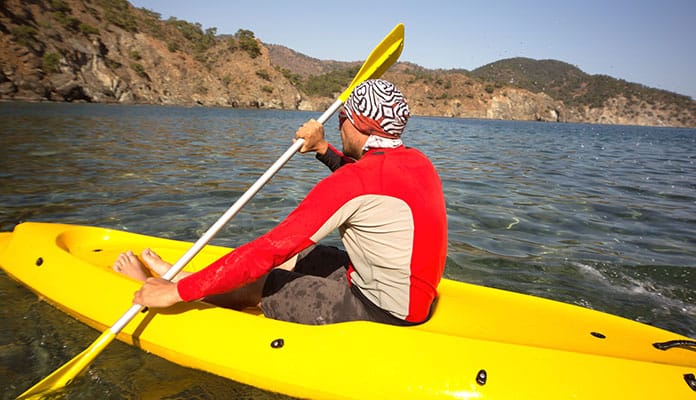
You want to make sure that you are always kayaking with a buddy, especially when you are learning how to kayak. Not only will this make your experience more enjoyable but bringing along a friend will also make it much safer. This is especially important when learning how to roll your kayak. Also, when you move into exploring rougher waters and longer trips, having a friend around can work to avoid emergencies.
We recommend staying on calm, still waters while you are getting your bearings. This will make your experience much safer and help you to get through the learning curve seamlessly. Practicing emergency rescue procedures before heading into rougher waters is crucial for keeping your time safe and enjoyable.
Life Jacket
Wearing a proper personal floatation device (PFD) while in the water is important no matter your skill level. This becomes more crucial for beginner paddlers and those who are heading into cooler waters or those with a bit of a current. In these tougher conditions, the risk of capsizing becomes more apparent and dangerous.
Staying Visible
Making sure other people can see you can be the difference between life and death in an emergency. Having people see you cannot only rescue you if you get lost, or even let your buddy see you at night. There are even reflective stickers you can put on your kayak to make it more visible as well. You should also have a whistle attached to your kayak as well.
Kayaking Tips
After learning the basics of this sport, you may find it helpful to get some advice on the latest tips and tricks.
- Planning your paddle route ahead of time is a great way to get the most out of your trip on the water.
- Bringing along a cooler for some refreshing drinks to enjoy the mid paddle.
- Bring along a set of small binoculars and a waterproof camera so that you can better enjoy all the beauty surrounding you.
- Pack along a compass to help you navigate through the waters with ease.
- Bring along a rope and learn how to tie a few different styles of knots so that you can tie your kayak up when not in use.
Common Kayaking Mistakes
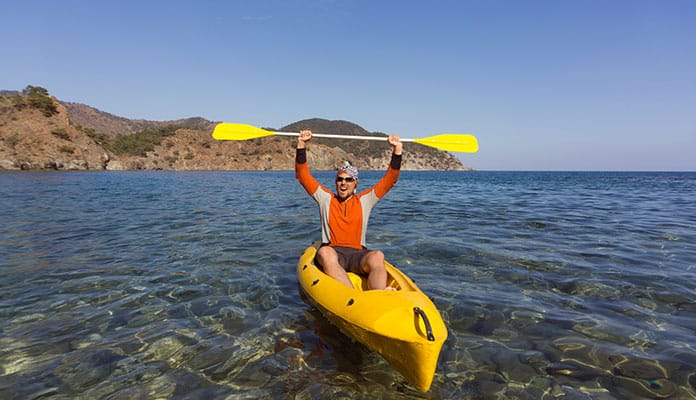
As with any new skill you are learning, you are bound to make some mistakes. Learning about common mistakes will help you to be better equipped to avoid them.
Bad Kayaking Posture
It’s best to learn the correct kayaking posture. This is especially true if you are planning long trips. The wrong posture can cause discomfort or even a pulled muscle. It may seem alright for short periods, but can be exaggerated over longer trips.
Most people only use their arms to stabilize their kayak when they should be using their entire bodies. This is why companies make such a big deal about footrests and comfortable seats. You need to use your legs to increase the power of your strokes.
You might also like: How Long Does It Take to Kayak a Mile?
Learn to Lean
Accidents happen, even when out on the water. Knowing how to handle a collision is crucial in ensuring that you can make the most of it. When you collide, your gut reaction will likely be to lean away although this is not the best thing to do. This will likely result in you flipping your kayak making a bad situation even worse. Instead, you will want to lean into the obstacle shielding yourself with your arms. When paddling in a river be sure to lean your body downstream, especially if your boat accidentally faces sideways. This will help you to safely regain control.
Wrong Paddle Position
Having a proper paddle technique will allow you to draw maximum power from your stroke meaning you have to work less hard to achieve success. A simple way to ensure you are not holding your paddle upside down is to look at the writing on your paddle. You should be able to read it when the paddle is in your hand. If you cannot, simply flip your paddle around and see if that works. Paddles that don’t have words require a bit more attention. You will need to analyze the shape of your paddle. The top of the blade should be flat and long while the bottom should have a more tapered look. The blade should curve towards you to scoop the water.
Globo Surf Overview
Kayaking is an incredibly popular sport that the whole family is bound to love. A great way to get a different perspective of the world, the peace experienced out on the lake is a true experience in itself. Once you get the basics down, you will love how far this sport can take you.
More Kayaking Guides:


